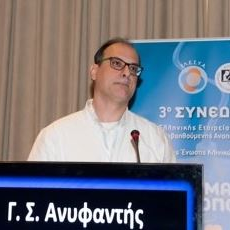Clinical Embryology and Reproductive Medicine
A special issue of Medicina (ISSN 1648-9144).
Deadline for manuscript submissions: closed (30 September 2019) | Viewed by 42615
Special Issue Editor
2. Assisted Reproduction Technology Unit (ART), Obstetrics and Gynaecology Clinic, University Hospital of Larisa, Larisa, Greece
Interests: quality of embryos; spermatozoa; IVF/ICSI; molecular embryology; IVF success/failure; assisted oocyte activation; time-lapse; pre-implantation genetic diagnosis (PGD); fertilization; ovarian stimulation; cryopreservation/vitrification; sperm/oocyte banking; fertility in oncology patients
Special Issues, Collections and Topics in MDPI journals
Special Issue Information
Dear Colleagues,
Clinical embryology covers the field of embryology in assisted reproductive techniques and involves sperm preparation and analysis, IVF/ICSI insemination procedures, the evaluation of the produced embryos either morphologically or with the help of advanced processes such as time-lapse imaging, metabolomics, the measurement of miRNAs with computational methods, the vitrification and thawing of gametes and embryos, and other aspects such as the quality control and assurance of laboratories. Today there is a need to assess the quality of transferred embryos, while the stimulation protocols used for the production of the best quality oocytes and subsequent embryos have been optimized according to each patient. Moreover, the field of clinical embryology and reproductive medicine covers bioethical issues, since embryology involves gametes and embryos at the pre-implantation stages.
Please consider contributing to this important area of study by submitting an article to this Special Issue on the state-of-the-art research on clinical embryology and reproductive medicine currently underway. By gathering our knowledge together, we aim to gain further common insights into the issues facing this field.
Assist. Prof. George Anifandis
Guest Editor
Manuscript Submission Information
Manuscripts should be submitted online at www.mdpi.com by registering and logging in to this website. Once you are registered, click here to go to the submission form. Manuscripts can be submitted until the deadline. All submissions that pass pre-check are peer-reviewed. Accepted papers will be published continuously in the journal (as soon as accepted) and will be listed together on the special issue website. Research articles, review articles as well as short communications are invited. For planned papers, a title and short abstract (about 100 words) can be sent to the Editorial Office for announcement on this website.
Submitted manuscripts should not have been published previously, nor be under consideration for publication elsewhere (except conference proceedings papers). All manuscripts are thoroughly refereed through a single-blind peer-review process. A guide for authors and other relevant information for submission of manuscripts is available on the Instructions for Authors page. Medicina is an international peer-reviewed open access monthly journal published by MDPI.
Please visit the Instructions for Authors page before submitting a manuscript. The Article Processing Charge (APC) for publication in this open access journal is 1800 CHF (Swiss Francs). Submitted papers should be well formatted and use good English. Authors may use MDPI's English editing service prior to publication or during author revisions.
Keywords
- quality of embryos
- spermatozoa
- IVF/ICSI
- molecular embryology
- IVF success/failure
- assisted oocyte activation
- time-lapse
- pre-implantation genetic diagnosis (PGD)
- fertilization
- ovarian stimulation
- cryopreservation/vitrification
- sperm/oocyte banking
- fertility in oncology patients






